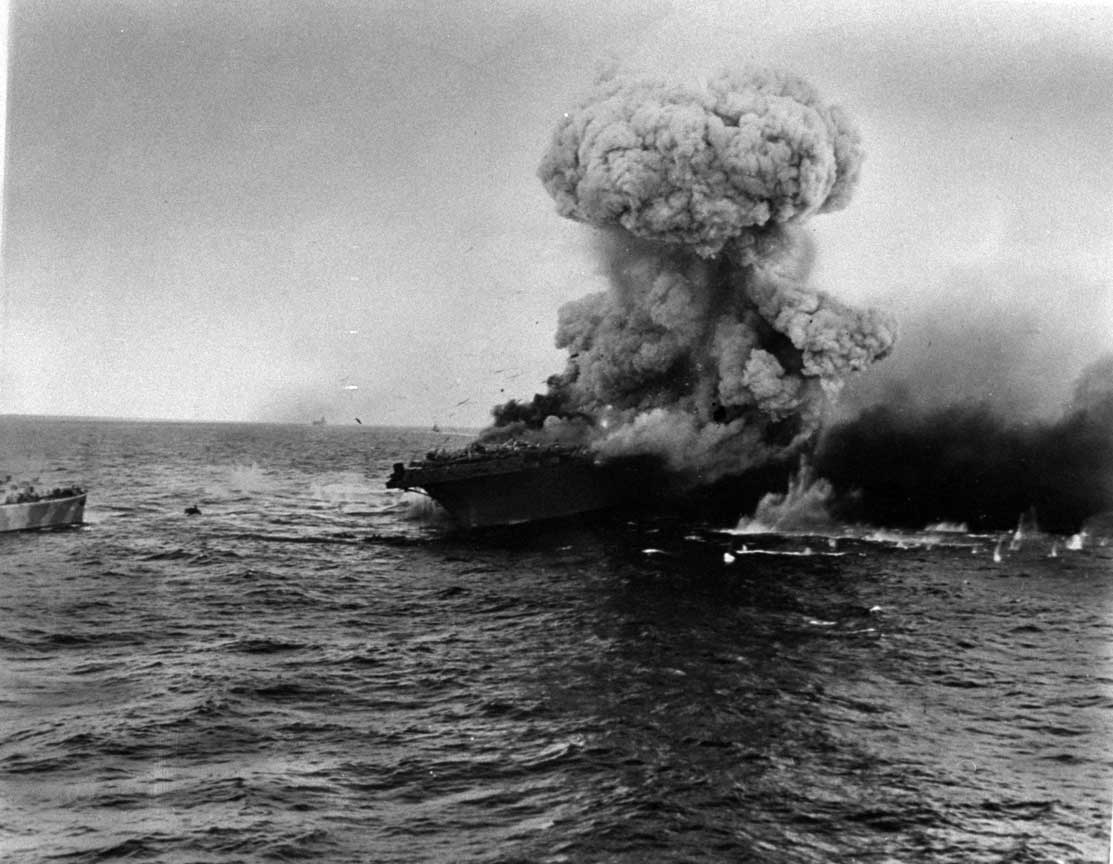MAY 7th 1942 Battle of the Coral Sea

USS Lexington
The Japanese were advancing toward Australia, with the intention of assaulting Port Moseby. US task forces engaged a Japanese force in the Coral Sea. It was the first battle in which two naval forces engaged, without ever coming within shooting distance of each other. Japanese planes managed to sink the American carrier "Lexington" and damage the "Yorktown." The Americans sank a Japanese light-carrier and put two Japanese cruisers out of commission. The Japanese advance was halted..
Allied intelligence, aided by the partial decrypting of the Japanese codes, indicated that the Japanese were planning to continue their advance and capture Port Moresby in Papua New Guinea. To the Allies, Port Moresby was an important base for the future planned offensives to begin to retake the Pacific from Japan. Thus, it was decided to dispute the Japanese advance by sending the carrier fleet to the Coral Sea under the command of Admiral Frank Fletcher.
The first stage of the Japanese advance was the capture of Tulagi in the Southern Solomon Islands. On May 3, the Japanese invaded Tulagi and quickly captured the island. American planes from the carrier Yorktown attacked the Japanese forces, and thus the Japanese forces under the command of Admiral Shigeyoshi Inoue knew that American fleet carriers were in the area.
The first stage in the battle occurred on May 7th at 7:20 a.m. when the Japanese thought they had identified the US aircraft carrier but had instead only identified the oiler Neosho and the destroyer Sims. The Japanese launched 78 aircraft to attack. While on the way, Admiral Inoue received a report with the true location of the American carriers, but he continued the attack on the first location. The Americans, meanwhile, located the Japanese invasion fleet that included the light carrier Shoho. Fletcher launched his aircraft towards that target .
The Japanese arrived at the location of the Sims and Neosho and sunk the Sims and damaged the Neosho. The American force arrived at the location of the Japanese landing force and spotted the Shoho and sunk her. Admiral Inoue ordered the Japanese invasion force to temporarily withdraw. In the afternoon, the Japanese launched a strike mission toward the location of the American carrier force, but their planes were ambushed and they lost seven torpedo planes and a dive bomber, and they called off the attack.
The American forces launched an attack at first light on May 8th on the Japanese main carriers. The battle carrier Shokaku was attacked and damaged; she was out of the battle. Before being attacked, the Japanese had launched a strike of 69 aircraft on the American aircraft carriers. The planes managed to hit the Lexington with two torpedoes, and then with a bomb dropped by a dive bomber. At first, it was believed that the Lexington would survive, but a short restarted the fires, and soon the order had to be given to abandon ship.
The American forces decided to withdraw, as did the Japanese. The battle was the first naval battle fought solely by aircraft, with the ships never seeing each other. It was a tactical victory for the Japanese, who sank the Lexington, a fleet aircraft carrier, compared to losing only a light aircraft carrier. It was, however, a strategic American victory; for the first time, the Japanese were stopped; they were forced to call off their attack.
 >
>